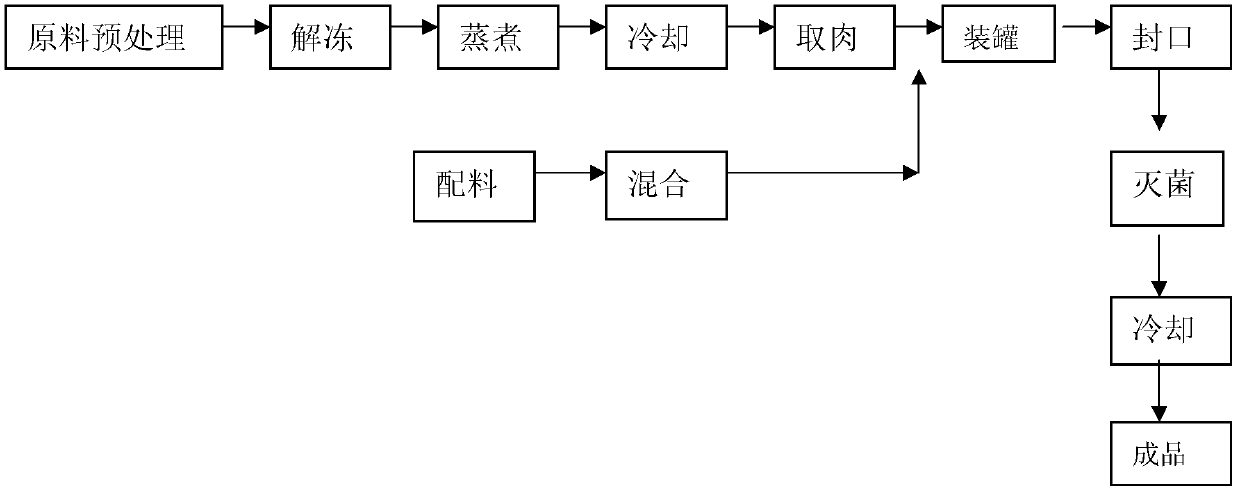Low-histamine fish product processing method
A processing method and fish meat technology are applied in the processing field of low histamine fish meat products, and can solve problems such as poisoning, histamine poisoning, that is, allergic food poisoning, and histamine poisoning of consumers.
- Summary
- Abstract
- Description
- Claims
- Application Information
AI Technical Summary
Problems solved by technology
Method used
Image
Examples
specific Embodiment
[0022] A kind of processing method of low-histamine fish meat product of the present invention, such as figure 1 As shown, the specific steps are as follows:
[0023] (1) Sorting pretreatment: remove some incomplete or even rotten raw fish from the raw fish kept fresh on ice before being transported into the freezer;
[0024] (2) To control the temperature during the thawing process of the raw fish, use flowing water with a moderate flow rate for thawing, the water temperature in the thawing tank shall not exceed 15°C, and the processing time shall not exceed 45 minutes;
[0025] (3) Control of ambient temperature and air humidity in processing operations: control the indoor ambient temperature of the batching and canning processing workshop below 21°C, and control the relative humidity of the indoor air below 70%;
[0026] (4) The control and operation method of the ingredients in the processing process: the raw fish processed by the steam heating sterilizer is rapidly coole...
Embodiment 2
[0032] Same as Example 1, the difference is: the indoor ambient temperature of the processing workshop for batching and canning is controlled at 16° C., and the relative humidity of the indoor air is controlled at 40%. The steam sterilizer uses atmospheric pressure steam to treat the fish body to a central temperature of 75°C, and the treatment time is controlled at 30 minutes.
Embodiment 3
[0034] Same as Example 1, the difference is: the indoor ambient temperature of the processing workshop for batching and canning is controlled at 20°C, and the relative humidity of the indoor air is controlled at 70%. The steam sterilizer uses atmospheric pressure steam to treat the fish body center temperature to 80°C, and the treatment time is controlled at 20 minutes.
PUM
 Login to View More
Login to View More Abstract
Description
Claims
Application Information
 Login to View More
Login to View More - R&D
- Intellectual Property
- Life Sciences
- Materials
- Tech Scout
- Unparalleled Data Quality
- Higher Quality Content
- 60% Fewer Hallucinations
Browse by: Latest US Patents, China's latest patents, Technical Efficacy Thesaurus, Application Domain, Technology Topic, Popular Technical Reports.
© 2025 PatSnap. All rights reserved.Legal|Privacy policy|Modern Slavery Act Transparency Statement|Sitemap|About US| Contact US: help@patsnap.com

